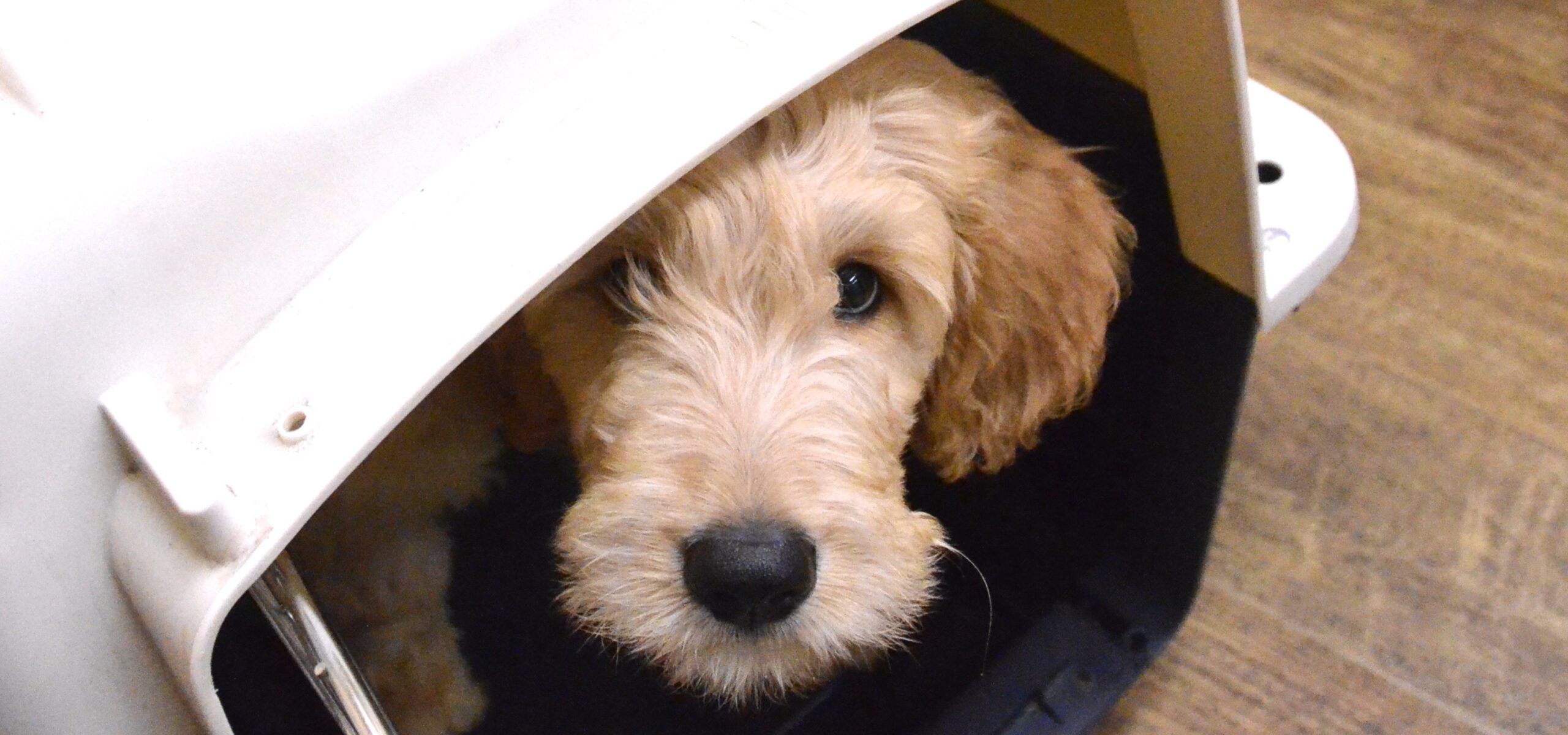
Choosing a Crate for Your Dog
Crates range in price from under $20 to as much as $200, depending on the size, type and source of purchase. Not using a crate to help your dog learn good house manners may mean your dog destroys your shoes, table legs, chairs and sofas, flooring, telephone and computer wires amongst many other items. Obviously, this can become quite costly and so the investment in a crate is a worthwhile expense.
However, the real cost of not using a crate is risking your dog’s safety. If you let your puppy or as of yet trained adult dog run free throughout your house, there is an endless list of trouble he or she can get into including:
• Eating houseplants
• Chewing electric cords
• Scavenging in the garbage
• Chewing your shoes and clothing
• Many more potentially dangerous and damaging situations too numerous to mention
There are lots of crates to choose from. So how do you know what’s best for you and your dog? First, decide whether you want a plastic-sided kennel or a wire kennel. There are benefits to both.
Some people consider the more open nature of metal crates to be more comfortable for their dog (i.e. so they can have a better view of the comings and goings in the household), while others feel the slightly more enclosed nature of plastic crates makes it easier for their dog to settle down and rest. I generally prefer to use plastic crates if only for the fact that there is a minor concern that a dog might catch their paw in the opening of the bottom part of a metal crate. But, if you already know your dog has a preference for a metal crate, then so be it. Just make sure the kennel is well made, sturdy, and lacks sharp edges that could hurt your dog.
[post_link]
When selecting a crate, choose one that allows your dog to stand up, turn around and lie down comfortably, as well as shift position and stretch a bit. If you have purchased a larger kennel in anticipation of your puppy’s adult size, consider placing a divider into it to make it temporarily smaller. If the crate is too large, your dog may eliminate in one end and sleep in the other and this will defeat the purpose of using the kennel as an aid in house training.
If you have chosen a plastic crate (that does not come with a divider) and you need to make it temporarily smaller (until your pup grows a bit), you might consider using a durable object to block off one area (such as a plastic milk crate). However, check it regularly to make sure your pup is not chewing off pieces, and if so, try something else or purchase a smaller plastic crate until your pup grows into the first one. In this case, you can eventually donate the crate your dog has outgrown to a local animal shelter or rescue such as Animal Haven.
Explore Our Dog Training Courses
Dog training from the experts
Educate your dog with Andrea Arden and her team.
New York | Los Angeles | Connecticut
Share
- Group Classes
- Private Lessons
- Virtual Training
- Puppy Play Groups
- Puppy Training
- Articles & Advice

